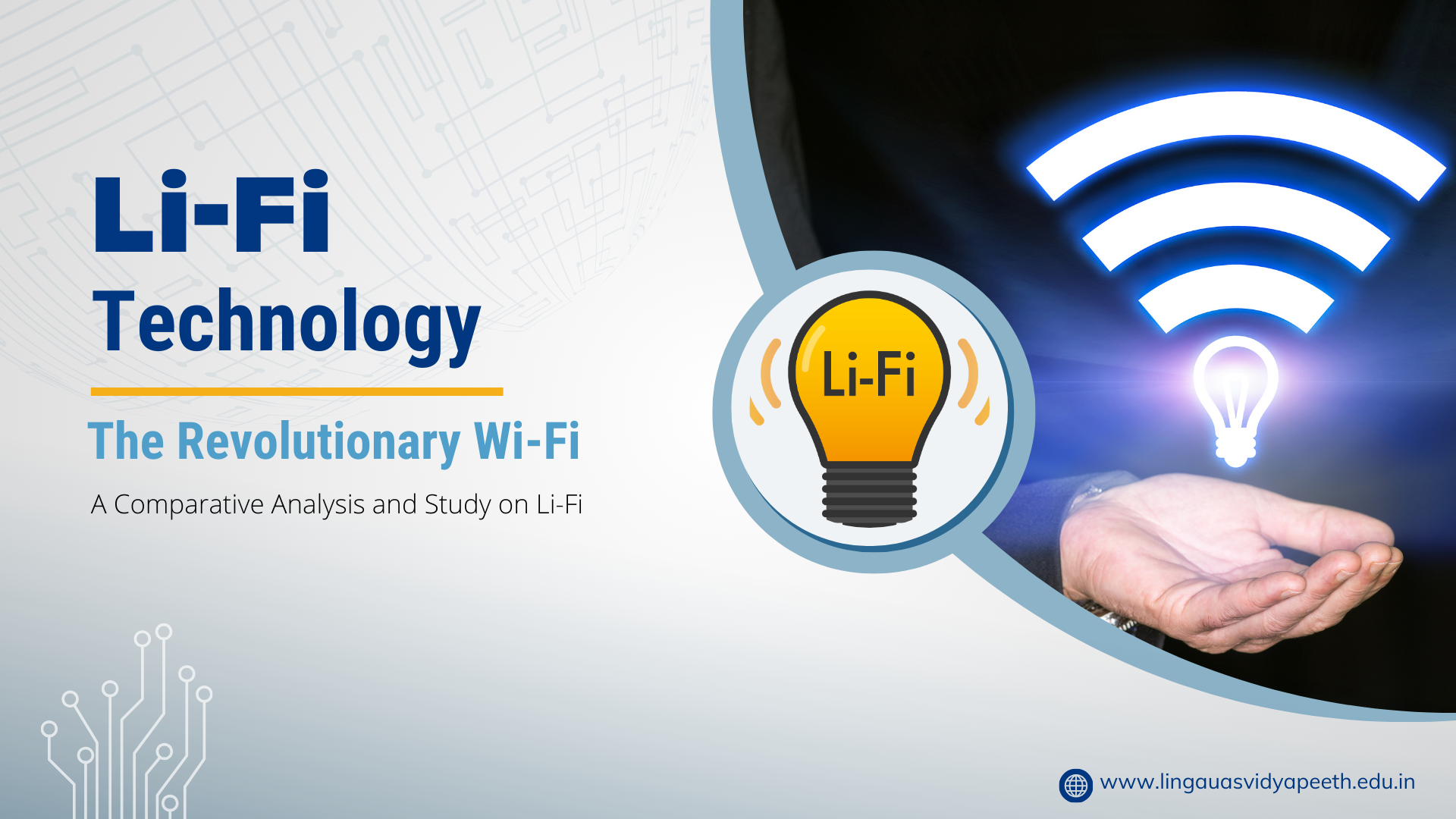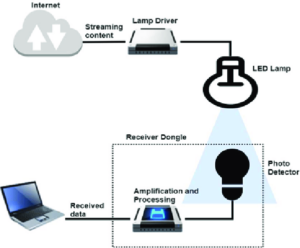Home » Li-Fi Technology – The Revolutionary Wi-Fi

In the rapidly evolving world of communication technologies, Li-Fi (Light Fidelity) is emerging as a revolutionary alternative to traditional Wi-Fi. Leveraging visible light for data transmission, Li-Fi offers unprecedented advantages in speed, security, and efficiency. Here’s an in-depth look at this groundbreaking technology and its potential to transform our digital landscape.
Li-Fi (Light Fidelity) is a wireless communication technology that transmits data using visible light at an extremely high speed. It shares some features with the existing Wi-Fi technology, but it also has significant differences. To put it another way, Li-Fi works by utilizing visible light, such as that emitted by a regular lamp or bulb!
Li-fi has recently garnered a lot of attention as various companies have emerged in this space. The Li-fi market is projected to grow to 115 billion in 2022 and register a 11.8 % gain by 2026.
The Rise of eSIM Technology: Is it Effective in India?
Unlike Wi-Fi, which relies on radio waves, Li-Fi utilizes light-emitting diodes (LEDs) as its communication channel. These LEDs can be rapidly switched on and off at incredibly high speeds, invisible to the human eye.
The data you want to transmit (like a website or video) is converted into a series of binary codes (0s and 1s). These codes then control the blinking pattern of the LED. A bright, constant light might represent a “1,” while a dimmer or flickering light could represent a “0.” By rapidly switching the LED on and off according to the data, Li-Fi creates a light signal that carries your information.
On the receiving end, a device equipped with a photodetector captures these light signals. The photodetector is essentially a light sensor that can convert the flickering light patterns back into electrical signals. These electrical signals are then decoded back into the original data, allowing you to access the information sent through the light.

There’s no doubt that Li-Fi will change the way people connect to the Internet. A likely scenario exists where we will eventually have access to a wide range of technologies and will be able to choose the most appropriate one.
We believe that having that flexibility is the most desirable scenario. In India, various companies as well as Student’s Educational and Cultural Movement of Ladakh (SECMOL) have started using Light Fidelity (Li-fi) technology for their school.
Conclusion –
Li-Fi represents a paradigm shift in wireless communication, offering a plethora of applications and transformative potential. While overcoming technical challenges and fostering industry-wide collaboration are imperative, the luminous path ahead holds promise for a world where light not only illuminates but also connects.
Are you passionate about technology and want to shape your future in electronics and communication field? Choose the B.Tech. course in Electronics & Communication Engineering at Lingaya’s Vidyapeeth University which is one of the leading best colleges for B.Tech programs. Lead in innovation, solve global challenges from AI to smart cities, and launch your career with our top-ranked university. Apply now!
From
Dr. Namrata Bansal
Assistant Professor
Lingaya’s Vidyapeeth
B.Tech Electronic Engineering Colleges in Faridabad
RECENT POSTS
CATEGORIES
TAGS
Agriculture Agriculture future AI Architecture artificial intelligence BA English BA Psychology BTech CSE BTech Engineering Business management career Career-Specific Education career guide Career Opportunities career option career scope Civil engineering commerce and management Computer Science Computer science engineering Data science degree education Engineering Engineering students English Literature english program Exam tips Fashion Design Fashion design course Higher Education Journalism journalism and mass communication law Law career Machine Learning MA Psychology Master degree mathematics MBA Mechanical Engineering Pharmacy Psychology Research and Development students
University Address: Nachauli, Jasana Road, Faridabad, Haryana
Toll Free: 1800-120-4613
Mobile : 8447744303 | 8447744304 | 8447744306 | 8447744309
Address: C-72, Second Floor, Shivalik, Near Malviya Nagar,
Above HDFC Bank, New Delhi 110017
Ph.No. - 011-46570515 / 45138169 / 41755703 / +91-7303152412
Jagmani Kutir, Ground Floor, Road No-1, Rajeev Nagar,
Near Darbar Marriage Hall, Patna-800024, Bihar
Contact No: 9818352069/8130120095
Mail: [email protected]
Copyrights © 1998 - 2025 Lingaya's Vidyapeeth (Deemed To Be University). All rights reserved.
It is important to note that the following email IDs and domains are fraudulent and do not belong to our university.
LV only conducts physical/online verification of any document related to examination on the following email id: